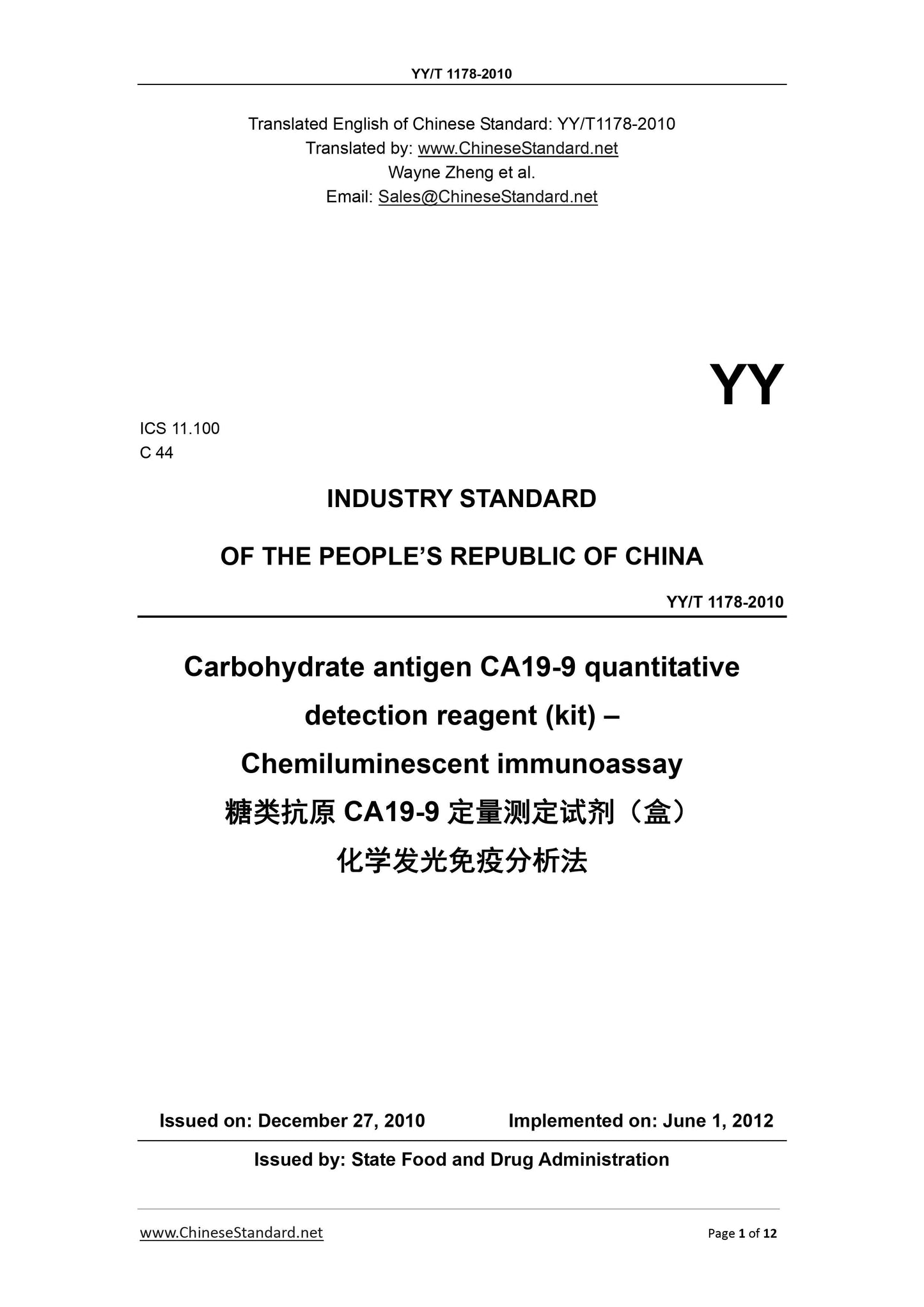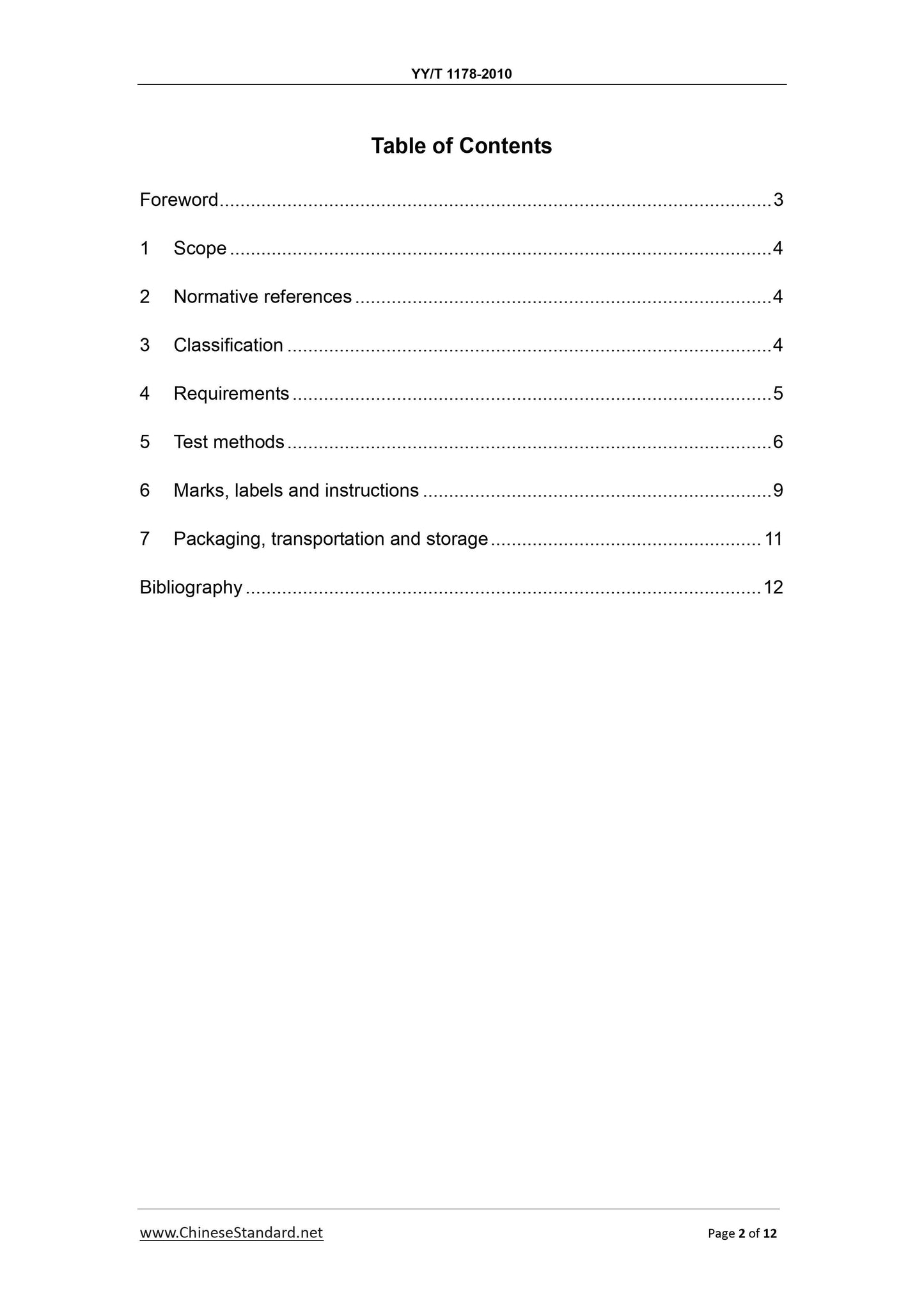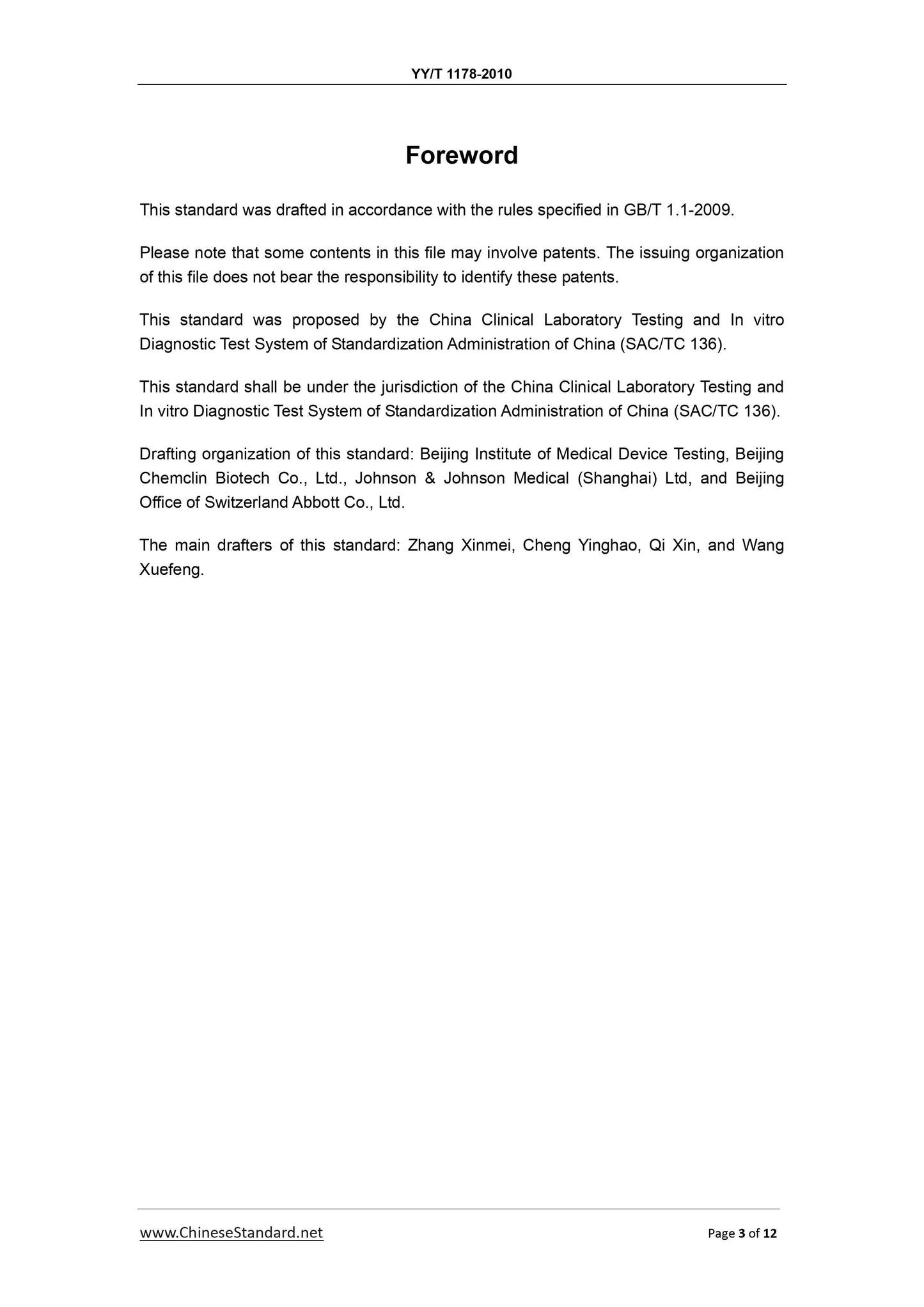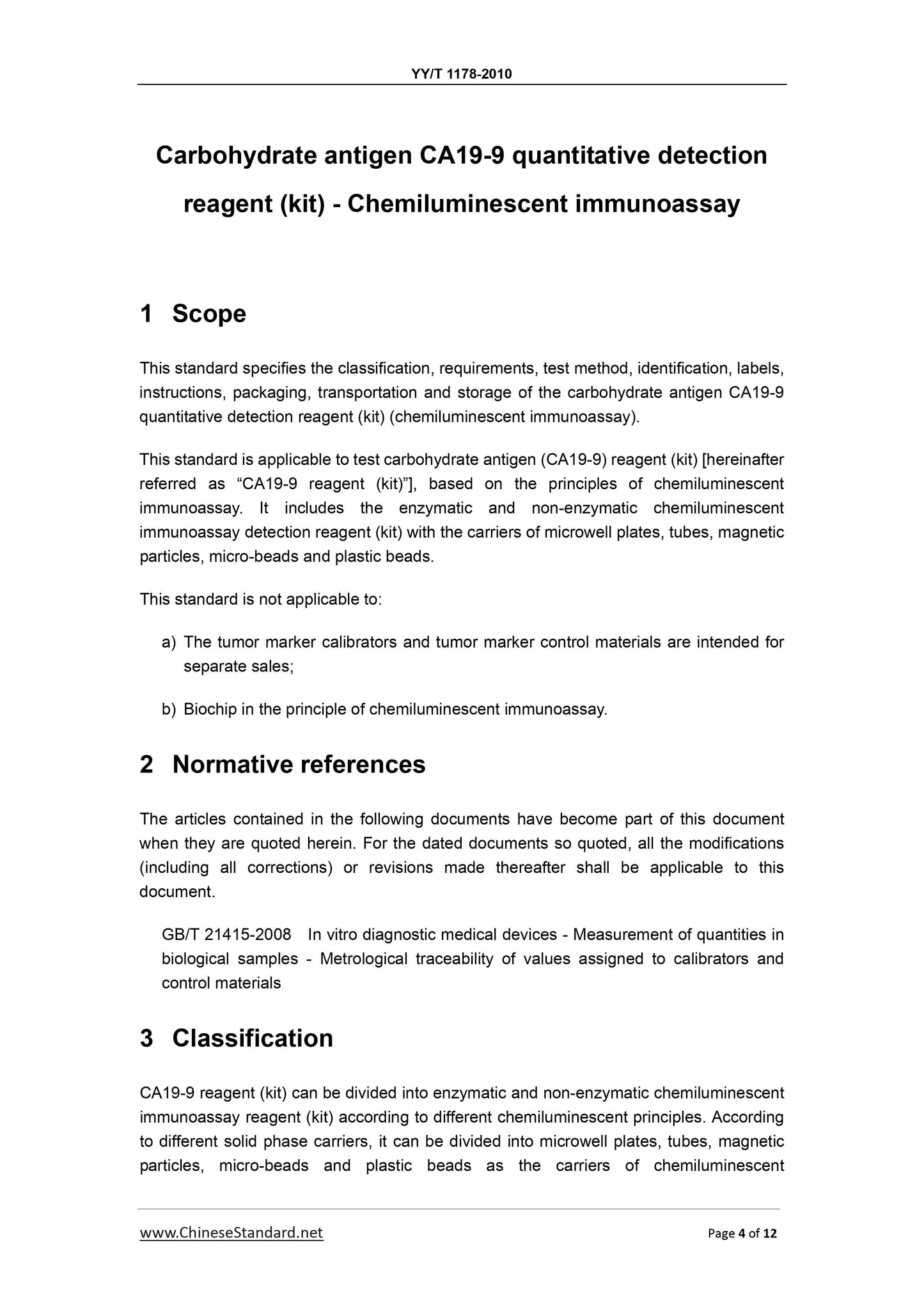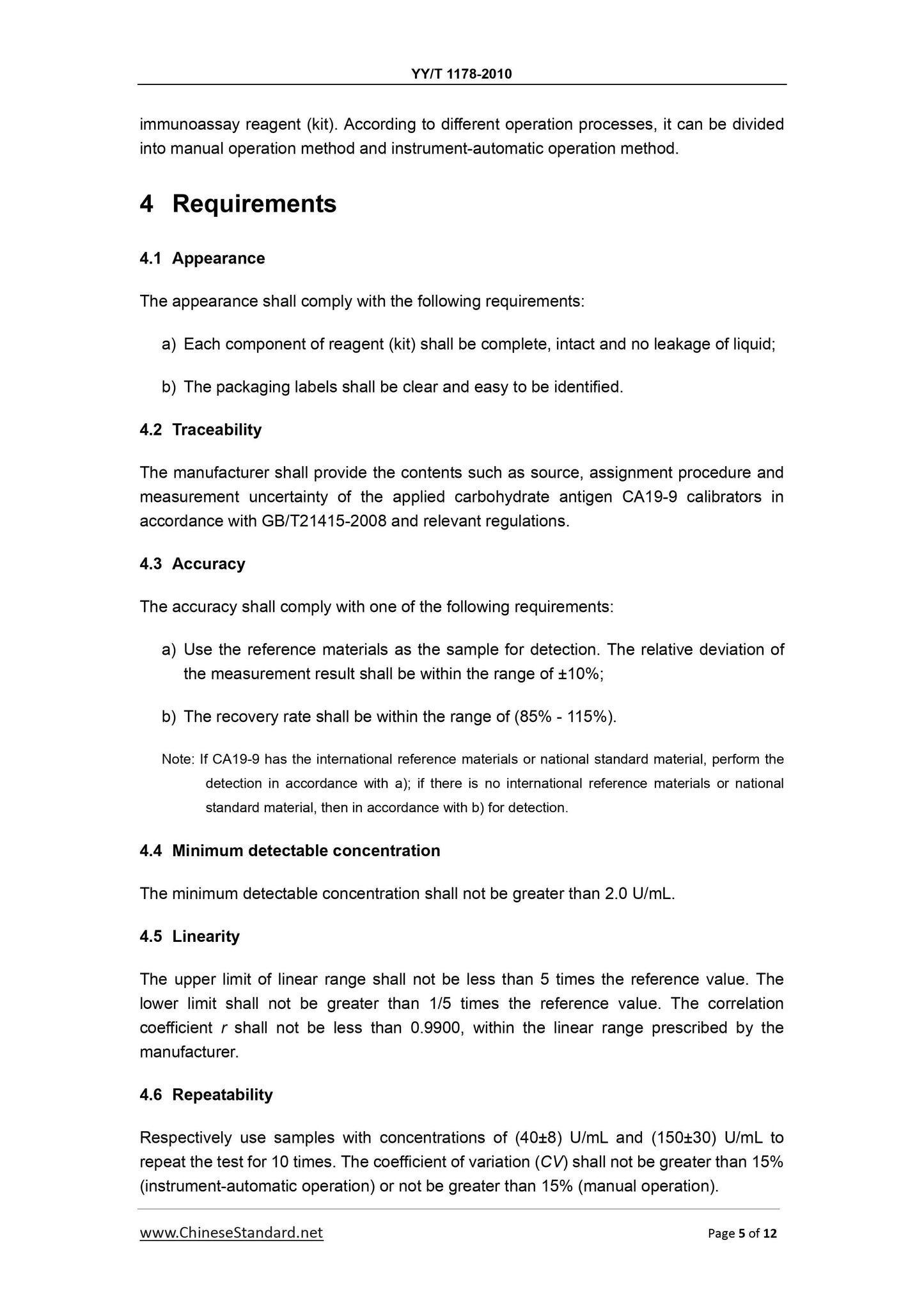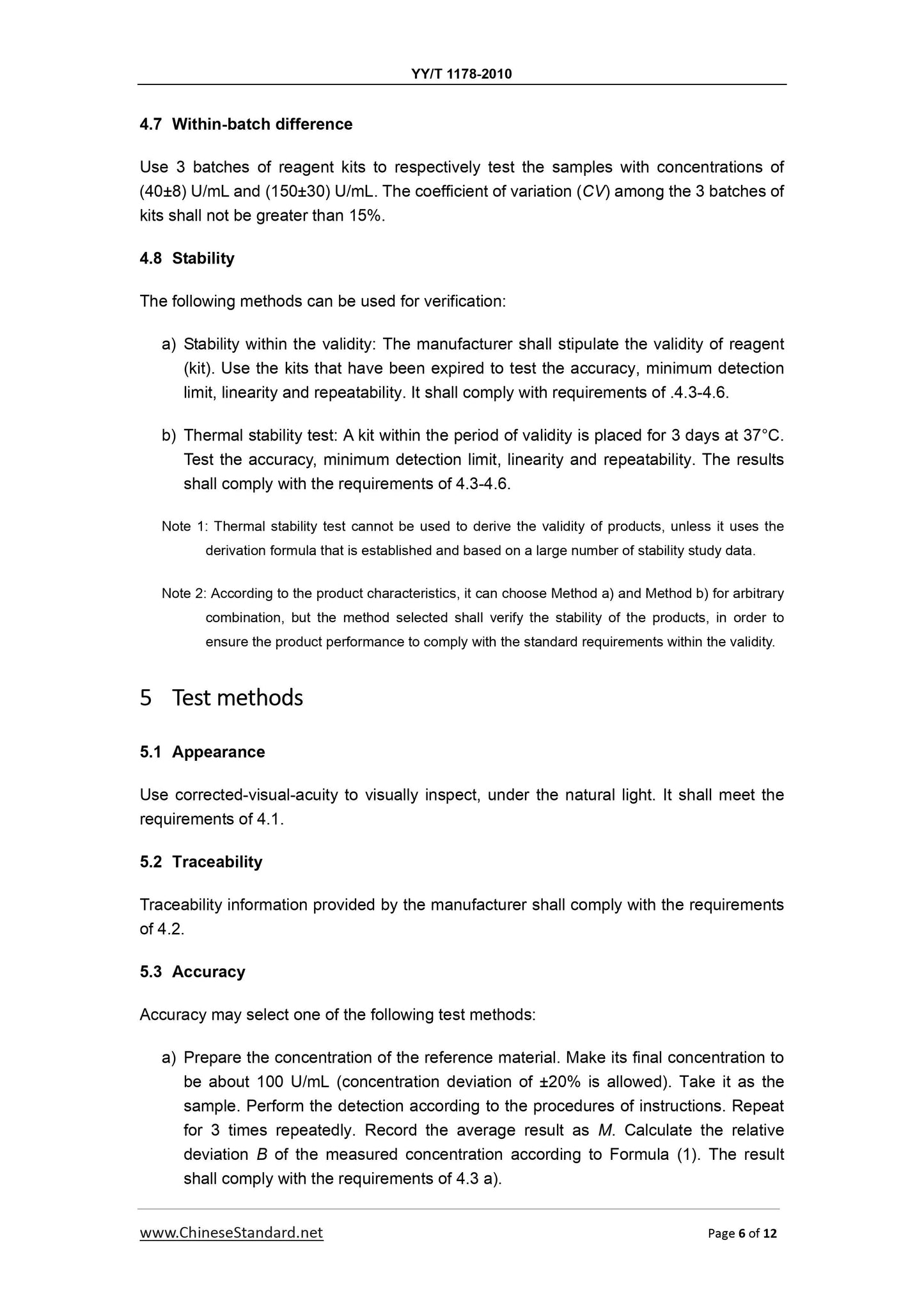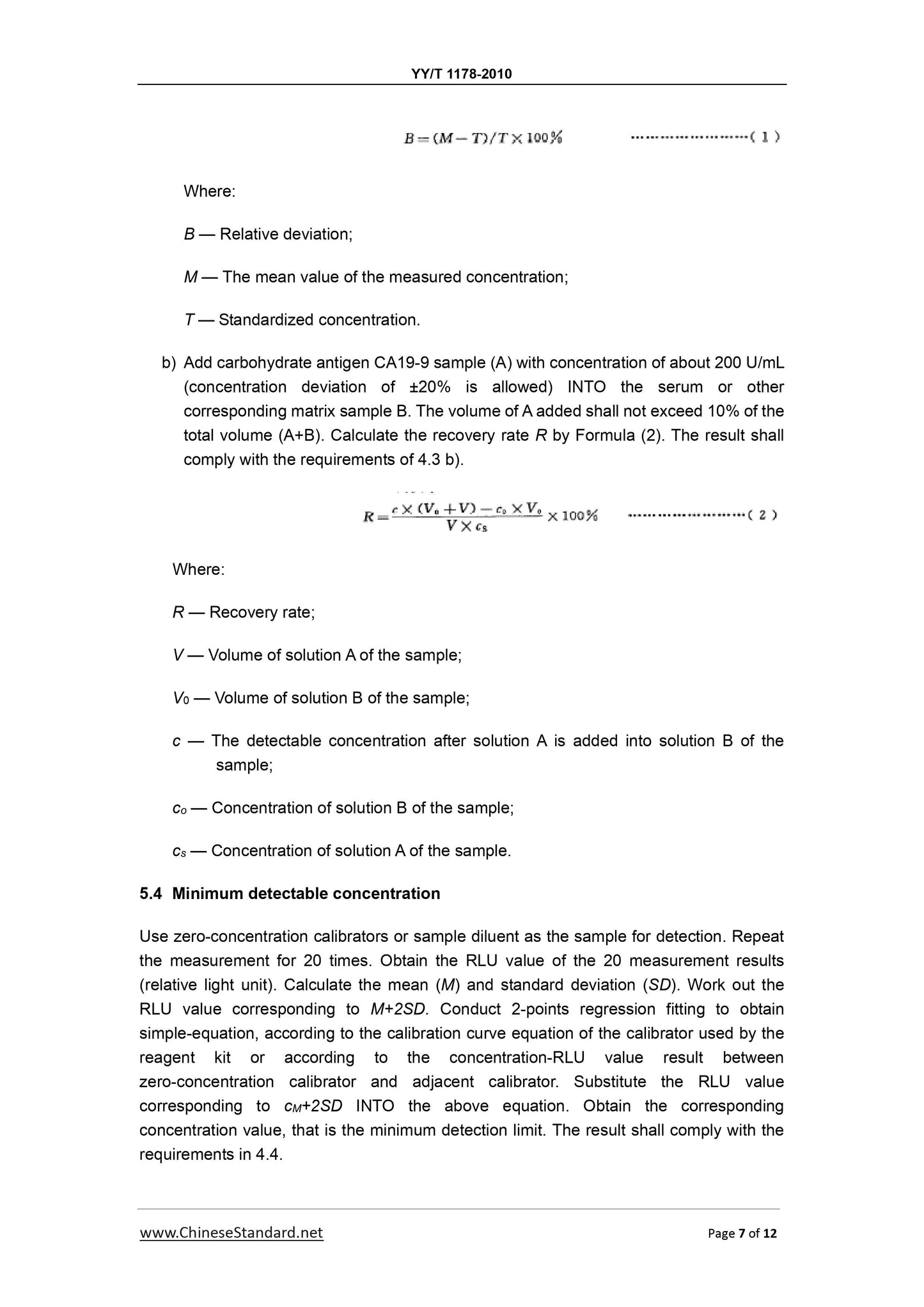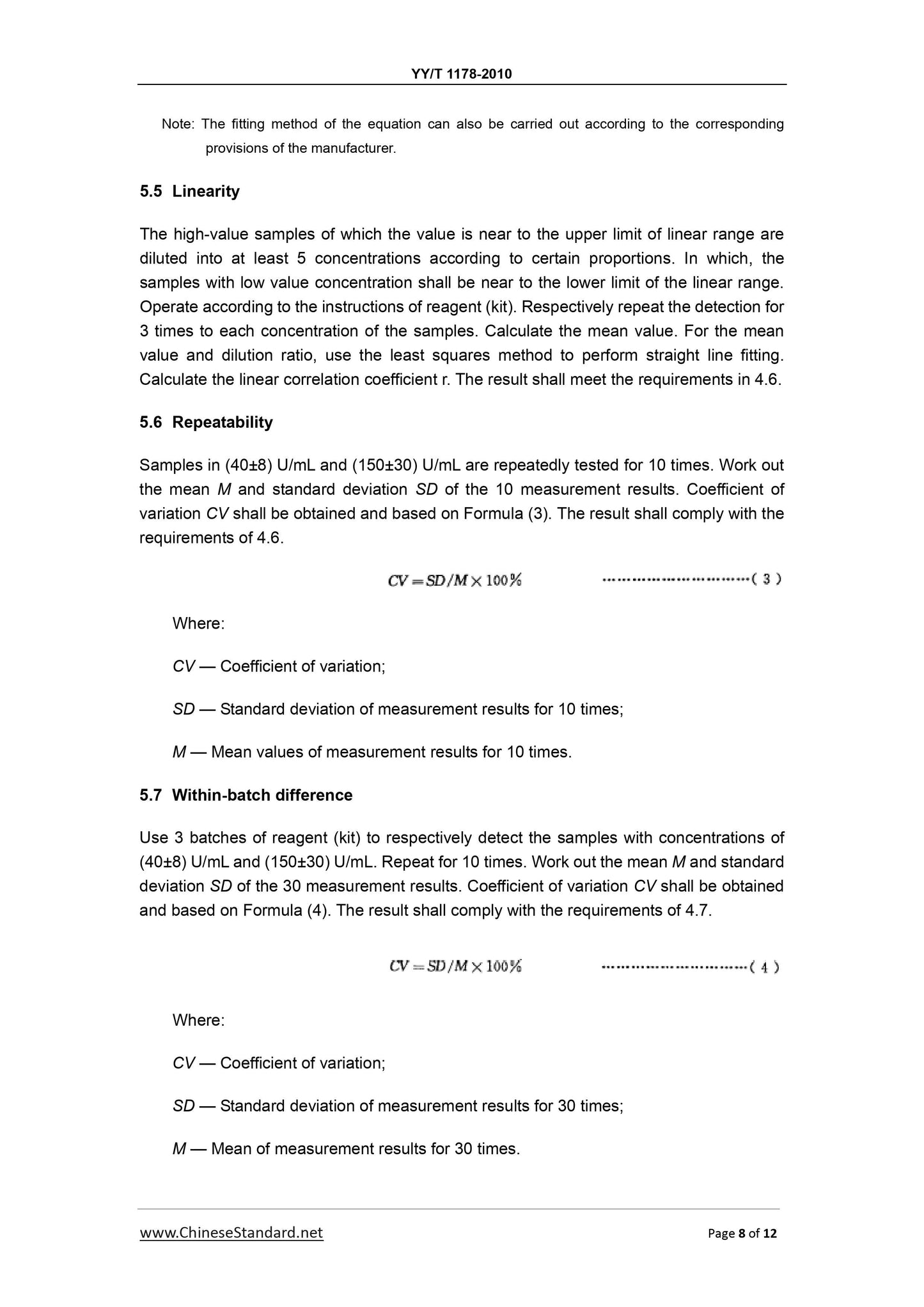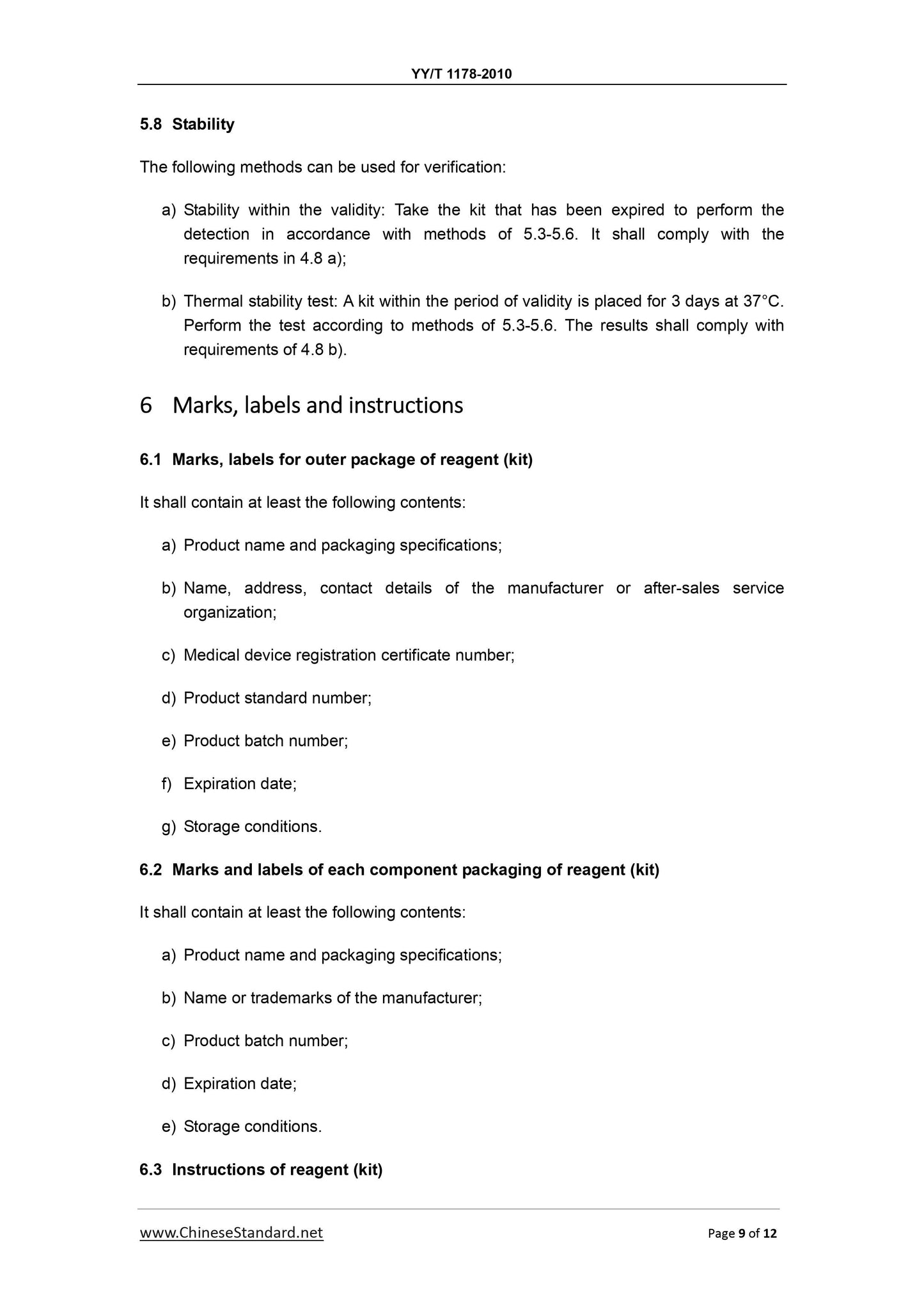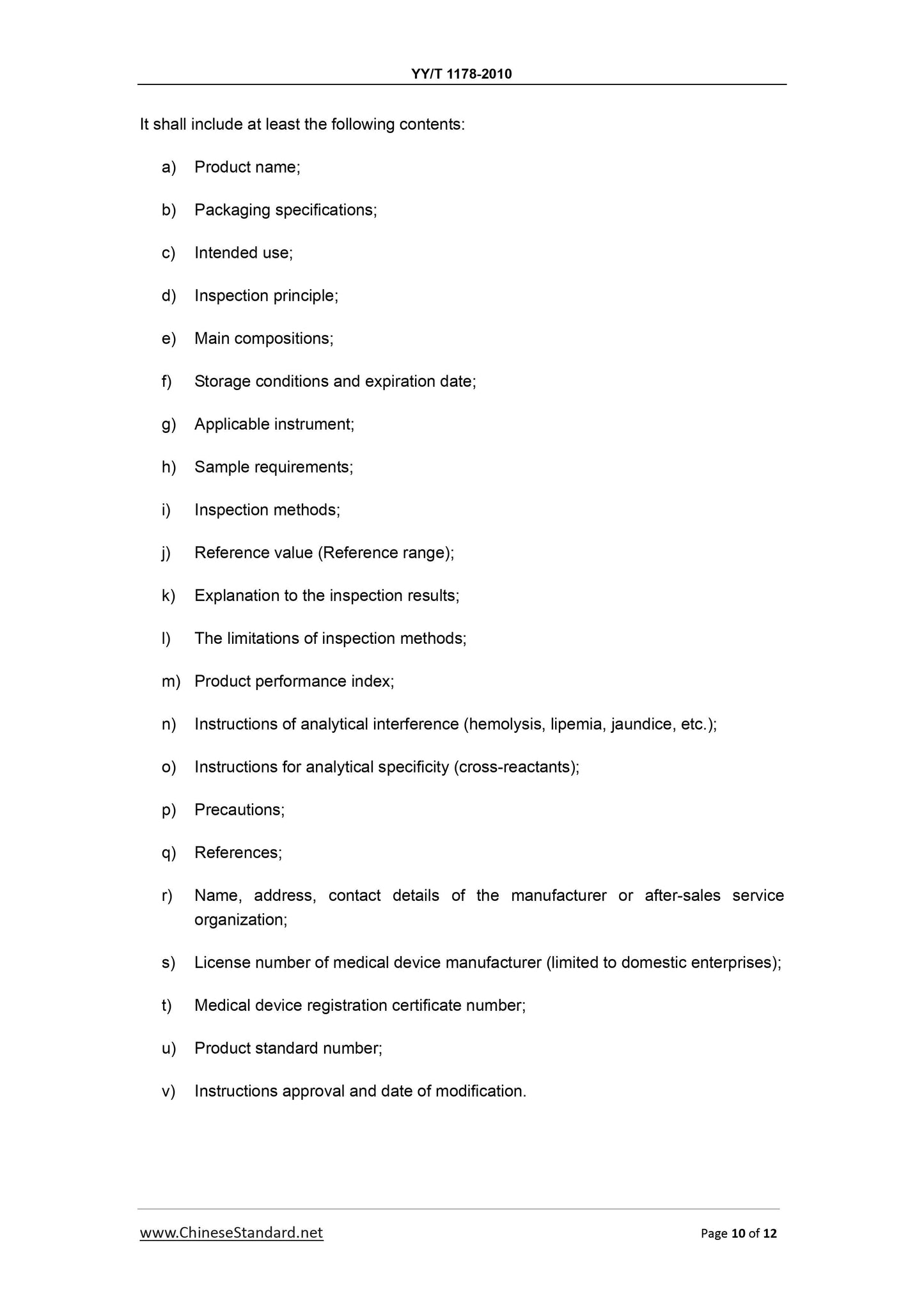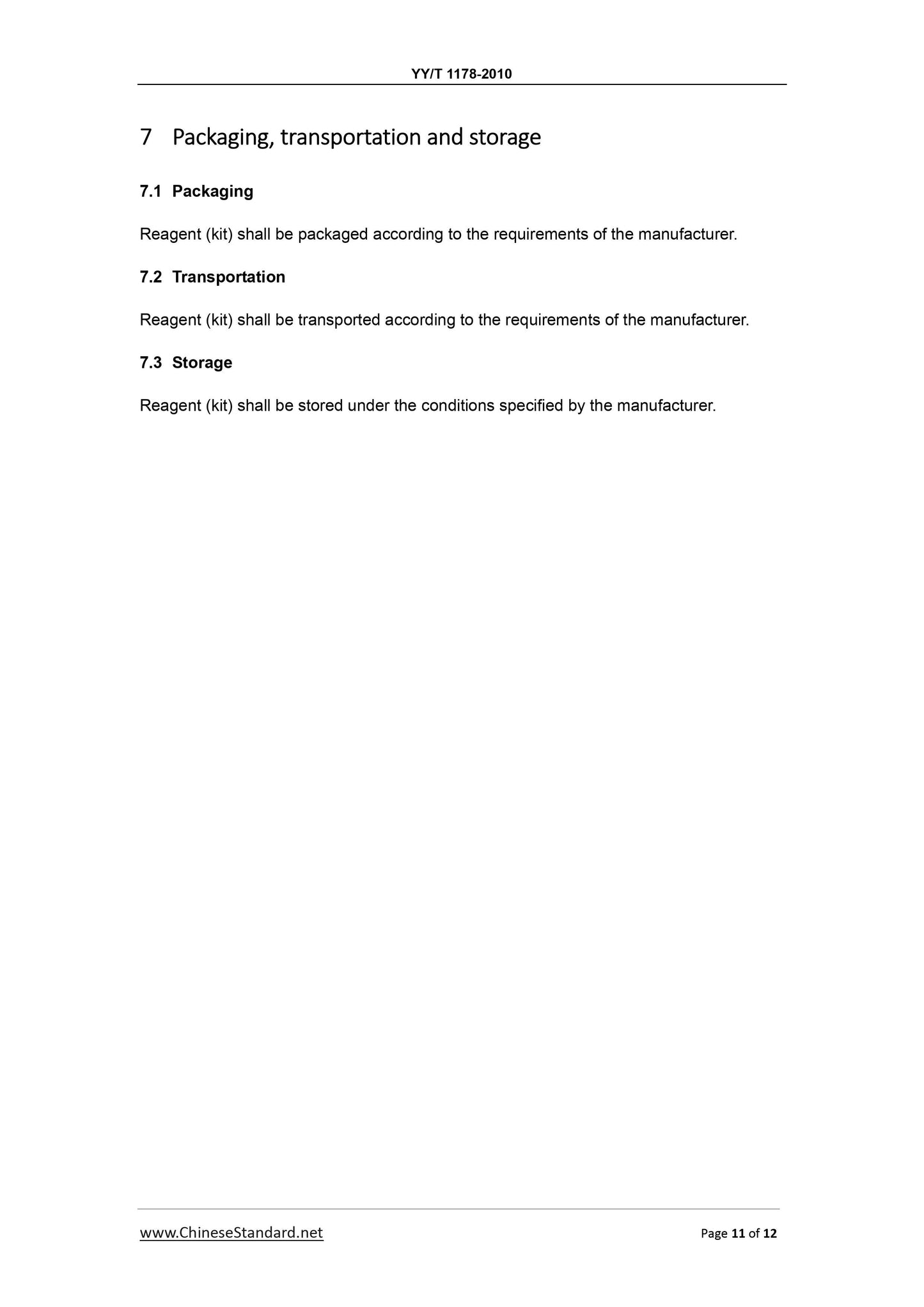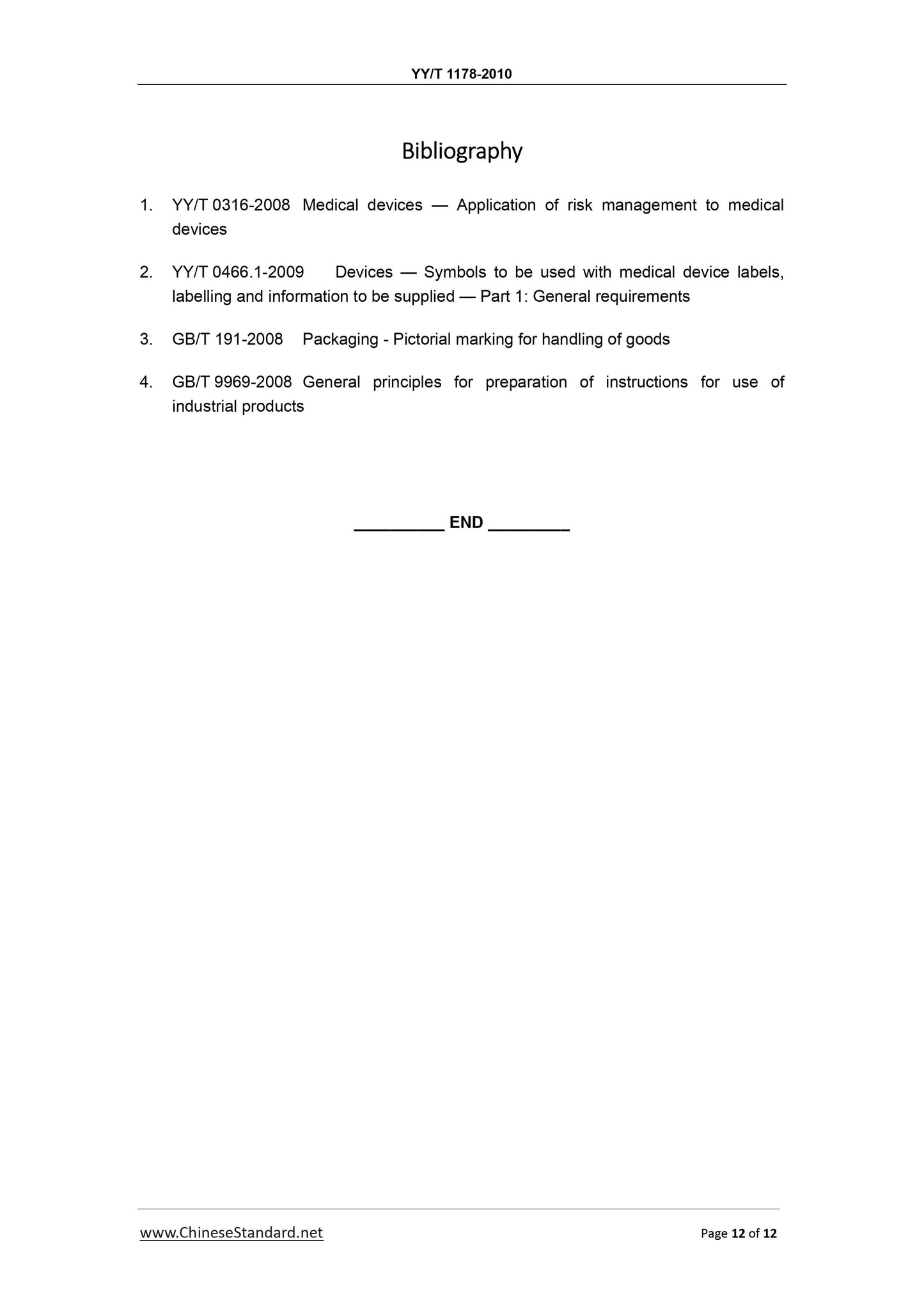1
/
of
12
www.ChineseStandard.us -- Field Test Asia Pte. Ltd.
YY/T 1178-2010 English PDF (YY/T1178-2010)
YY/T 1178-2010 English PDF (YY/T1178-2010)
Regular price
$150.00
Regular price
Sale price
$150.00
Unit price
/
per
Shipping calculated at checkout.
Couldn't load pickup availability
YY/T 1178-2010: Carbohydrate antigen CA19-9 quantitative detection reagent(kit) - Chemiluminescent immunoassay
Delivery: 9 seconds. Download (and Email) true-PDF + Invoice.Get Quotation: Click YY/T 1178-2010 (Self-service in 1-minute)
Newer / historical versions: YY/T 1178-2010
Preview True-PDF
Scope
This standard specifies the classification, requirements, test method, identification, labels,instructions, packaging, transportation and storage of the carbohydrate antigen CA19-9
quantitative detection reagent (kit) (chemiluminescent immunoassay).
This standard is applicable to test carbohydrate antigen (CA19-9) reagent (kit) [hereinafter
referred as “CA19-9 reagent (kit)”], based on the principles of chemiluminescent
immunoassay. It includes the enzymatic and non-enzymatic chemiluminescent
immunoassay detection reagent (kit) with the carriers of microwell plates, tubes, magnetic
particles, micro-beads and plastic beads.
This standard is not applicable to.
a) The tumor marker calibrators and tumor marker control materials are intended for
separate sales;
b) Biochip in the principle of chemiluminescent immunoassay.
Basic Data
| Standard ID | YY/T 1178-2010 (YY/T1178-2010) |
| Description (Translated English) | Carbohydrate antigen CA19-9 quantitative detection reagent(kit) - Chemiluminescent immunoassay |
| Sector / Industry | Medical Device and Pharmaceutical Industry Standard (Recommended) |
| Classification of Chinese Standard | C44 |
| Classification of International Standard | 11.100 |
| Word Count Estimation | 10,131 |
| Date of Issue | 2010-12-27 |
| Date of Implementation | 2012-06-01 |
| Quoted Standard | GB/T 21415-2008 |
| Regulation (derived from) | State Food and Drug Administration Notice 2010 No. 97 |
| Issuing agency(ies) | State Food and Drug Administration |
| Summary | This standard specifies the carbohydrate antigen CA19-9 quantitative determination reagent (box) (chemiluminescent immunoassay) classification, requirements, test methods, marking, labeling, instructions, packaging, transportation and storage. This standard applies to chemiluminescence immunoassay for the quantitative determination of the principle carbohydrate antigen (CA19-9) reagent (box). Including microplates, tubes, magnetic particles, beads and plastic beads, etc. as the carrier of enzymatic and non-enzymatic chemiluminescence immunoassay reagent (box). This standard does not apply to: a) intended to be used tumor markers sold separately tumor marker substance calibrators and control products, b) to chemiluminescent immunoassay for the principle of bio-chips. |
Share
